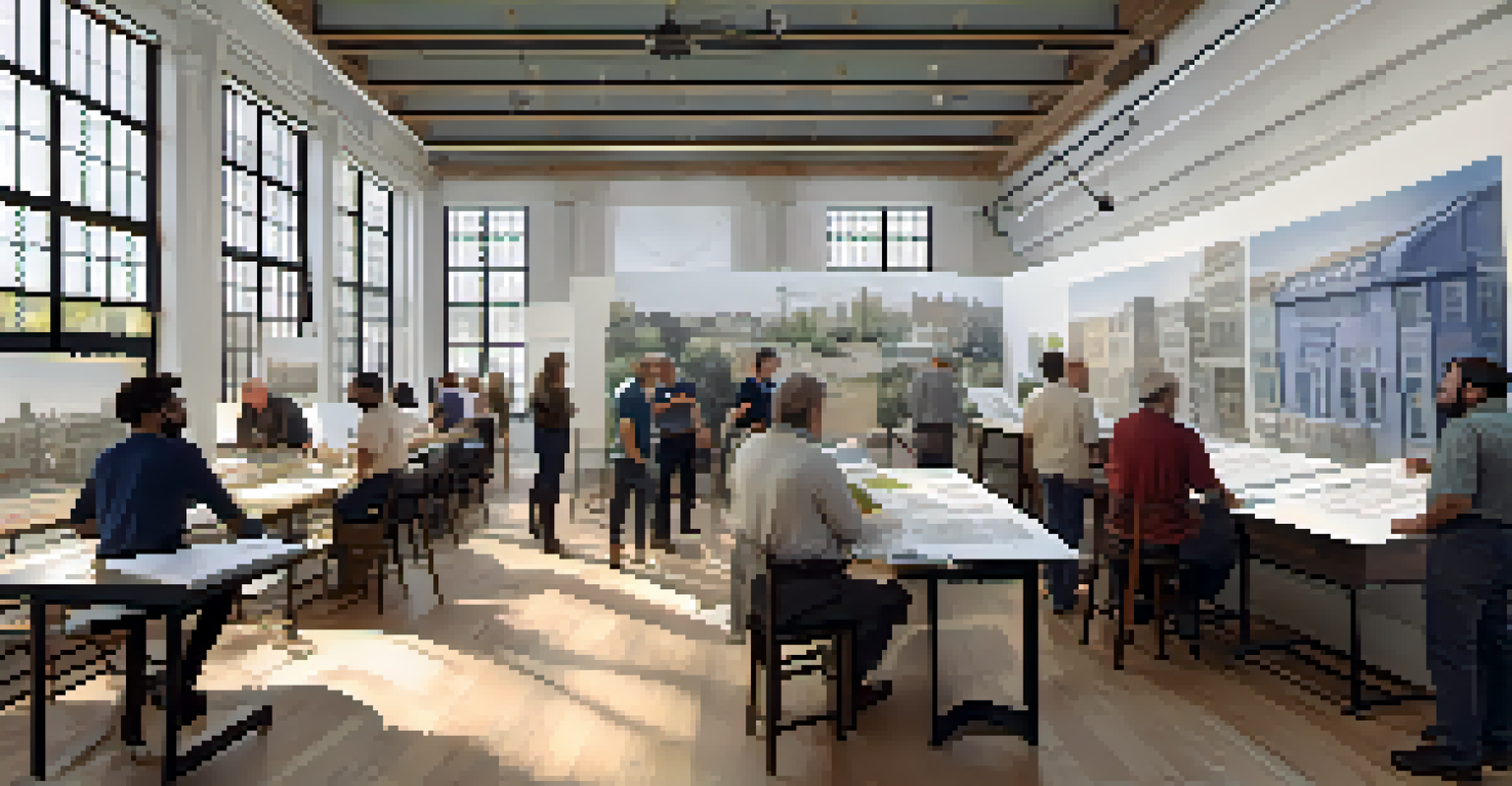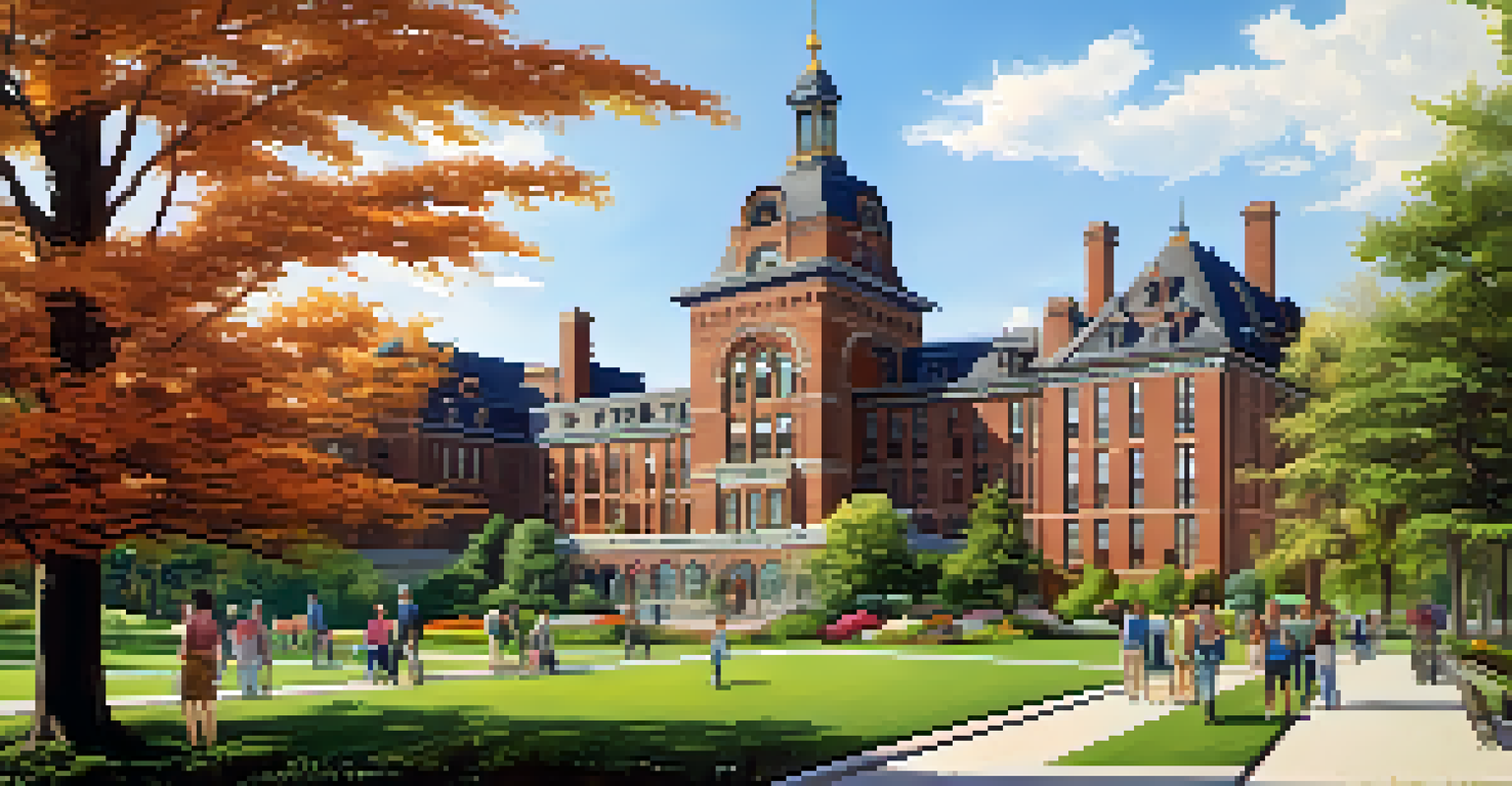Community Engagement in Buffalo's Architectural Preservation

The Importance of Community Engagement in Preservation
Community engagement is essential in architectural preservation, especially in a vibrant city like Buffalo. When locals actively participate in the preservation of their heritage, they contribute not only to the physical landscape but also to the cultural narrative of the city. This collective effort fosters a sense of ownership and pride among residents, making them more invested in maintaining their surroundings.
Preservation is a form of empowerment, allowing communities to take ownership of their history and shape their future.
Moreover, community involvement ensures that diverse voices are heard, reflecting a wide range of perspectives and needs. This inclusivity can lead to more thoughtful preservation strategies that resonate with the community's values. In Buffalo, where history and innovation intertwine, engaging the community helps to safeguard the unique character of neighborhoods.
Ultimately, when residents collaborate with preservationists and local governments, the results can be transformative. They can create spaces that honor the past while embracing future possibilities, helping Buffalo maintain its distinct identity.
Historical Context: Buffalo's Architectural Heritage
Buffalo boasts a rich architectural heritage, influenced by various styles and movements over the centuries. From stunning examples of neoclassical designs to the iconic Frank Lloyd Wright structures, the city's buildings tell stories of its past. However, many of these structures face challenges such as neglect, decay, or the threat of demolition due to urban development.

Understanding this historical context is crucial for community members who wish to engage in preservation efforts. By learning about the architectural significance of their surroundings, residents can better advocate for their protection. This awareness can spark interest and enthusiasm, driving community members to take action.
Community Engagement is Vital
Active participation in preservation fosters pride and ownership among Buffalo residents, ensuring their cultural heritage is honored.
Preserving Buffalo's architectural gems not only maintains the city's aesthetic appeal but also fosters a connection to its rich history. Each building represents a chapter of Buffalo's story, and engaging the community ensures that these stories continue to be told.
Successful Community Engagement Initiatives
Numerous initiatives in Buffalo exemplify successful community engagement in architectural preservation. Local organizations, such as the Buffalo Preservation Board, actively involve residents in discussions about preservation strategies. These initiatives often include workshops, public meetings, and educational programs that empower community members to take part in decision-making processes.
Community engagement is the heartbeat of successful preservation efforts, where the past and present come together to inspire future generations.
One notable project is the restoration of the Richardson Olmsted Complex, which involved extensive community input. Residents participated in planning sessions, sharing their visions for the site and contributing to its revitalization. This collaborative approach not only preserved a significant landmark but also fostered a renewed sense of community pride.
These examples illustrate how effective communication and collaboration can lead to successful preservation outcomes. When communities unite around a shared goal, they can create lasting change and ensure that their architectural heritage is preserved for future generations.
The Role of Local Organizations in Preservation
Local organizations play a pivotal role in fostering community engagement in Buffalo's architectural preservation. Groups like the Buffalo Architectural Heritage Foundation and Preservation Buffalo Niagara are dedicated to educating the public about the importance of preserving the city's unique structures. They host events, provide resources, and advocate for policies that support preservation efforts.
These organizations often serve as a bridge between the community and local government, facilitating dialogue and ensuring that residents' voices are heard. By providing platforms for discussion and opportunities for involvement, they empower individuals to take action in their neighborhoods. This collaborative approach helps build a stronger, more informed community.
Local Organizations Lead the Way
Groups like the Buffalo Architectural Heritage Foundation play a crucial role in educating the public and bridging communication between community members and local government.
Furthermore, local organizations often partner with schools and universities, incorporating preservation education into curricula. By reaching out to younger generations, they inspire a new wave of advocates who will continue the work of preserving Buffalo's architectural legacy.
Challenges Faced in Community Engagement
Despite the many benefits of community engagement in architectural preservation, there are challenges to overcome. One significant hurdle is apathy; many residents may feel disconnected from preservation efforts or believe their input doesn’t matter. This disconnect can lead to a lack of participation, making it difficult to gather diverse perspectives.
Another challenge is the complexity of preservation regulations and processes. Jargon and technical language can alienate community members who may not have a background in architecture or preservation. It's essential for organizations to simplify these concepts and communicate clearly to encourage greater involvement.
Finally, funding can pose a barrier to community engagement initiatives. Limited resources may restrict outreach efforts or educational programs. However, by fostering partnerships with local businesses and seeking grants, organizations can enhance their engagement strategies and ensure broader participation.
The Impact of Social Media on Engagement
In today's digital age, social media has become a powerful tool for enhancing community engagement in architectural preservation. Platforms like Facebook, Instagram, and Twitter allow organizations to connect with residents in real time, sharing updates, events, and success stories. This accessibility helps to raise awareness about preservation issues and encourages community participation.
Social media also enables residents to share their own stories and experiences related to local architecture. By creating a shared digital space for discussion, individuals can inspire one another and foster a sense of community. This engagement can lead to grassroots movements that drive preservation initiatives forward.
Social Media Enhances Involvement
Digital platforms facilitate real-time communication and storytelling, empowering residents to engage in preservation efforts and strengthen community ties.
Moreover, social media campaigns can amplify the reach of local organizations, attracting new supporters and potential volunteers. This interconnectedness not only strengthens community ties but also elevates the importance of preserving Buffalo's architectural heritage in the public consciousness.
Looking Ahead: The Future of Preservation in Buffalo
As Buffalo continues to evolve, the future of architectural preservation largely depends on ongoing community engagement. By fostering a sense of pride and ownership among residents, the city can ensure that its historical treasures are protected. It's essential for local organizations and government agencies to prioritize inclusive outreach efforts to keep the momentum going.
Emerging technologies and innovative preservation techniques can also enhance community engagement. Virtual reality tours and interactive digital platforms can provide residents with new ways to experience and connect with their architectural heritage. These tools can inspire the next generation of preservationists, encouraging them to take an active role in safeguarding their city's history.

Ultimately, the success of preservation efforts in Buffalo hinges on collaboration and community involvement. By continuing to engage residents and celebrate the city's unique architectural identity, Buffalo can pave the way for a vibrant, historically rich future.